How memes fuelled GameStop’s 1600% stock surge
It’s no surprise that the GameStop short squeeze produced so many Internet memes, considering the heavy involvement of retail traders from online communities such as the wallstreetbets subreddit, 4chan’s biz board, and various Discord channels.
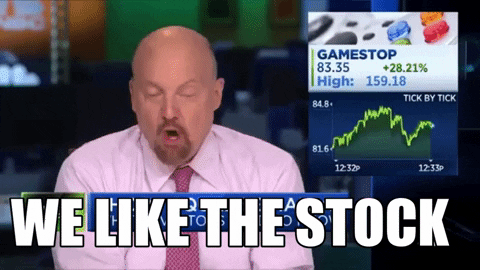
Some of the memes were new, such as “We like the stock” after CNBC analyst Jim Cramer used the phrase to mockingly describe the retail traders buying up $GME en masse.
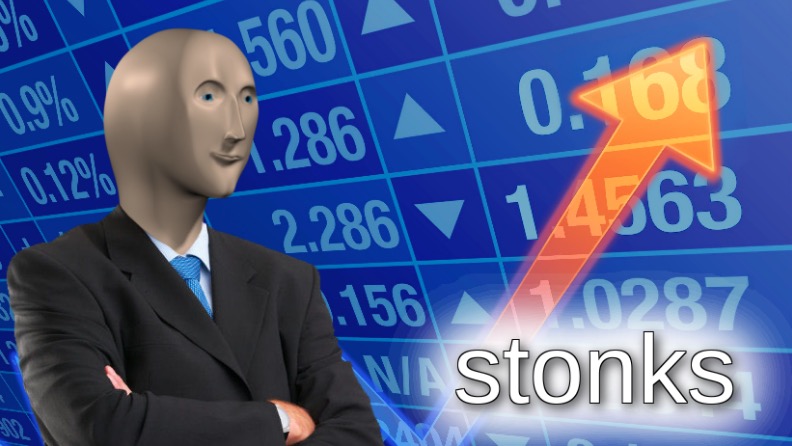
Some of the memes were adopted. Like “stonks”, which had been making its rounds for years.
Sure, having a common purpose of making money, shared experiences, and common enemies (Wall Street, mainstream media, the establishment) contributed greatly to the coordinated bull rush, but as this article will explain, the memes used by the retail traders also played important, and somewhat invisible roles in the $GME spike.
1. Build trust and commitment among strangers
The only way the retail traders could have overpowered an aggressively bearish Melvin Capital was through collective action. And how did the online communities of retail traders use memes to generate and reinforce the trust required for such collective action?
They created a cult hero. DeepFuckingValue is considered the guy who started the whole $GME short squeeze craze, primarily on the wallstreetbets subreddit. He cut a somewhat elusive figure, making only limited appearances on the subreddit but when he does so, his posts would be focused on making costly signals or CREDs (Credibility Enhancing Displays) of his commitment to the cause. We’re talking about screenshots of his trading account showing intraday losses of tens of millions of dollars. We’re talking about his now-legendary reply “What’s an exit strategy?”
As a result of his unwavering commitment, he’s been glorified into meme legend status.

The retail traders also adopted memes as a form of insider lingo, reinforcing the “Us vs. Them” mentality.
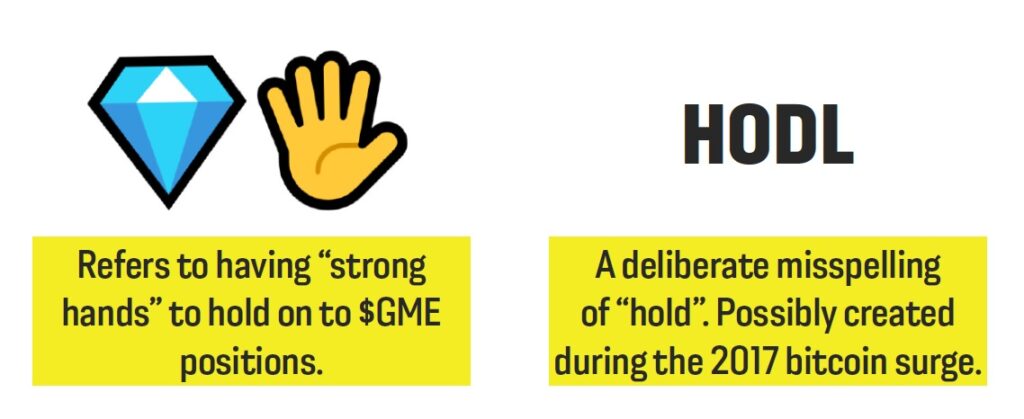
2. Convert bystanders
But the insider lingo couldn’t be too exclusionary since after all, the retail traders wanted more people to join their cause. Hence, they have also adapted well-known memes to attract new members.

The brrr meme you see above was created in 2020 and it certainly got pretty famous through its variations. In January 2021, it got turned into a billboard in Times Square, serving as strong encouragement to the in-the-know crowd to join the short squeeze.
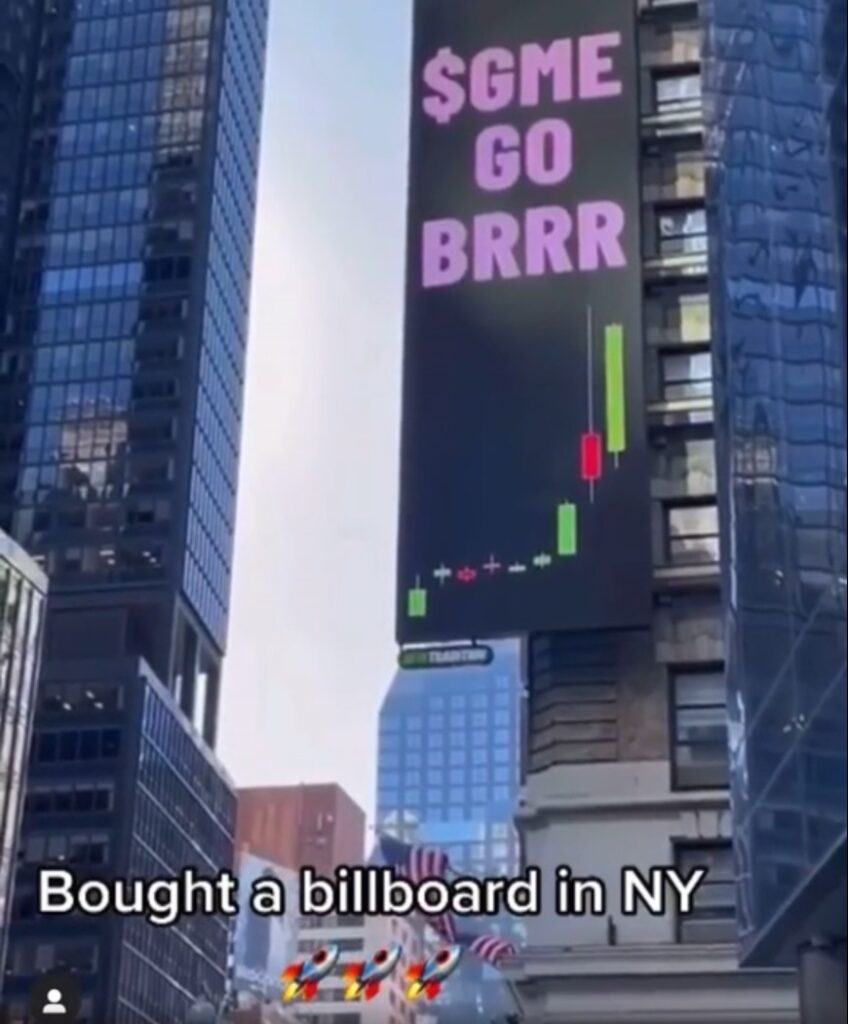
3. Generate and sustain emotions
Just like in a social movement, the more enthusiastic retail traders were motivated to maintain a level of excitement or positivity among the general community, especially during non-trading hours or when the chart wasn’t looking great. What better way to do so in an online setting than memes?
An especially popular form of memes created for this purpose consisted of re-subtitled scenes from famous films.
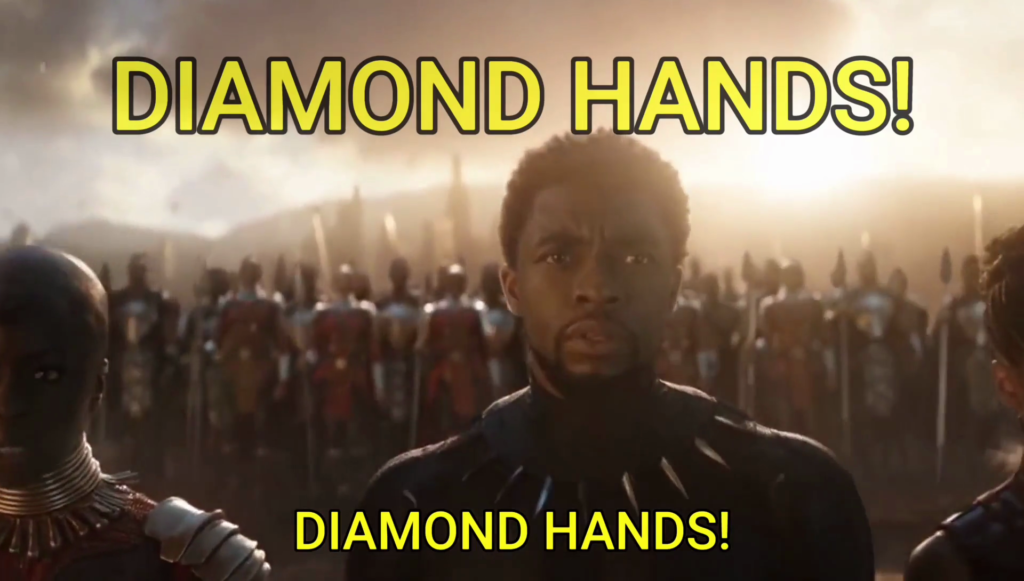
4. Signal $GME’s popularity
Due to the viral potential of memes, they also served as indicators of how widespread the knowledge of $GME was. This popularity fed into the three points mentioned previously (build commitment, attract new members, generate emotions).
For example, it was common to see $GME-related memes leak into the more mainstream avenues such as YouTube comments and even in the real world. But the ultimate indicator of popularity was probably when elite influencers referenced them publicly.
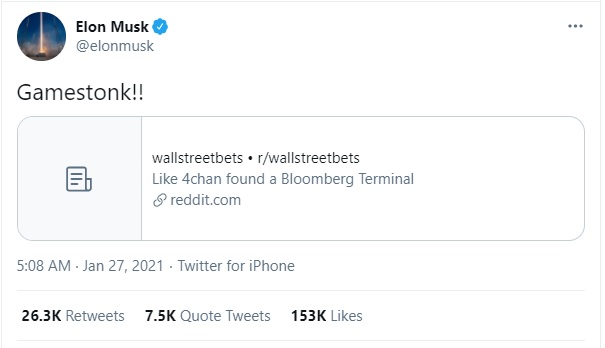
Like any other social movement, the success of the $GME short squeeze will depend on more than just one factor; memes alone won’t change the world. But they can certainly play important roles, as illustrated here and in greater detail by researchers such as Limor Shifman and Emiliano Treré.
At the time of writing, the $GME movement has waned somewhat since the stock hitting its peaks of US$300+ per share. However, as history has shown, social movements don’t just disappear completely; many of their members just join or form new ones. It’d be interesting (and worrying to some) to see where this goes.
This article is also available on Slideshare.
